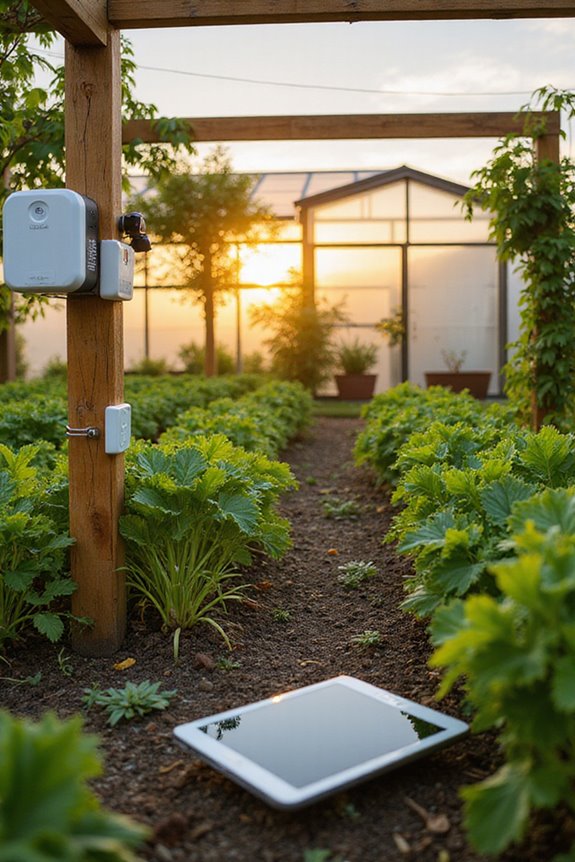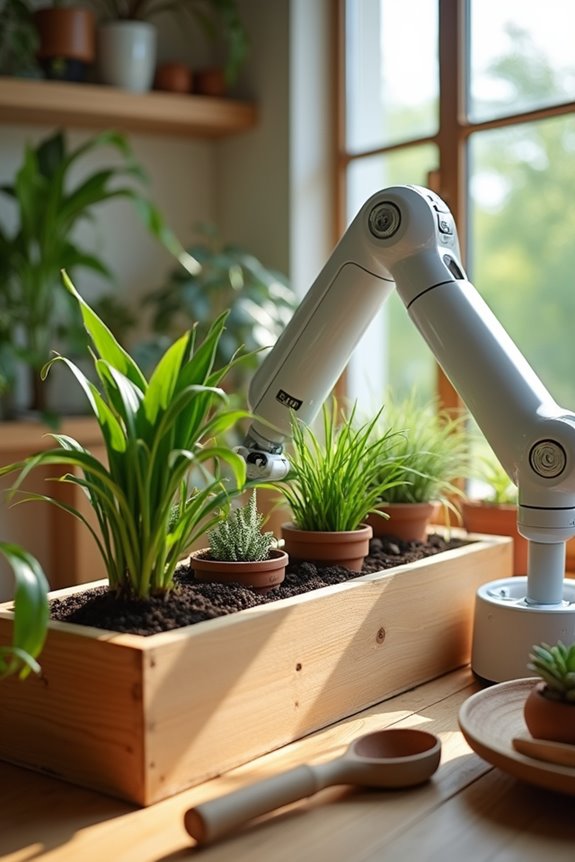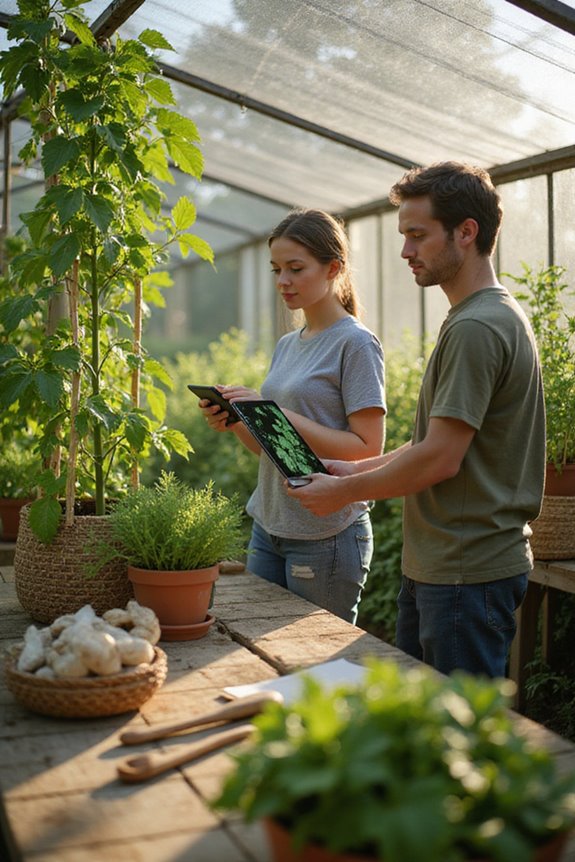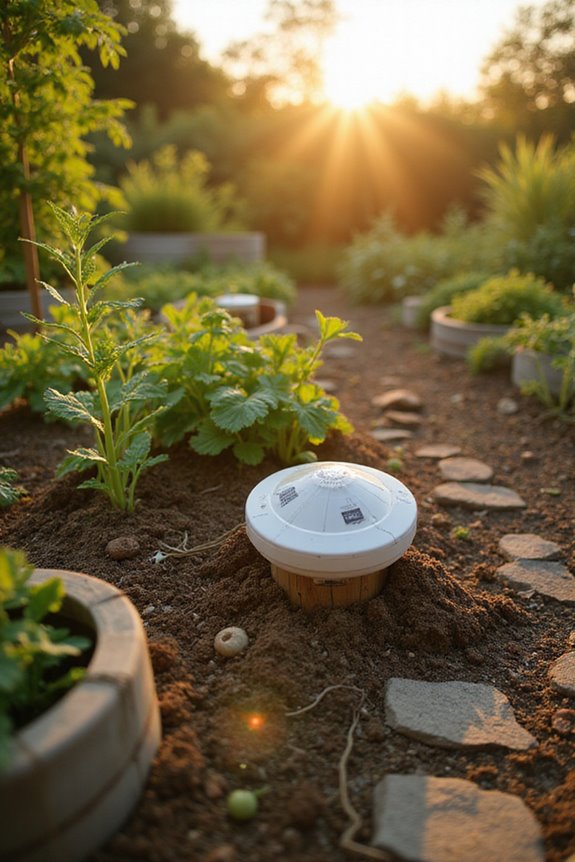To troubleshoot IoT garden issues, we can take a systematic approach. First, check connectivity. Make certain our Wi-Fi signal isn’t blocked by walls or interference. Next, we should verify hardware setup by measuring sensor accuracy and ensuring proper wiring. For software, reviewing error logs can highlight potential faults. Don’t forget to investigate watering systems; faulty pumps or clogs can hinder performance. Finally, be mindful of environmental factors like humidity that could affect our sensors. Let’s explore these steps in more detail.
Key Takeaways
- Check for physical barriers that may weaken Wi-Fi signals and ensure optimal placement of devices for better connectivity.
- Regularly calibrate soil moisture sensors and test them in known conditions to ensure accurate readings.
- Collect error logs from devices and update firmware to resolve potential software issues.
- Inspect water pumps and actuators for malfunctions, ensuring all components are functioning correctly before operation.
- Monitor environmental factors like temperature and humidity, as they can significantly affect sensor performance and accuracy.
Connectivity and Network Issues
When we think about connectivity in our IoT gardens, we often run into several common issues. One major concern is signal interference from physical barriers like walls and plants. These obstacles can greatly weaken our Wi-Fi signals, leading to frustrating connectivity problems. Additionally, network density plays an important role. When we have over 100 devices connected, it can lead to gradual disconnections that require frequent reboots to restore our network’s stability. We should also consider the channel width settings on our 2.4GHz networks. Using a forced 40MHz setting can cause instability, making it vital to select the right channels for better performance. Addressing these factors helps guarantee that our IoT garden thrives with reliable connectivity.
Hardware Setup and Sensor Calibration
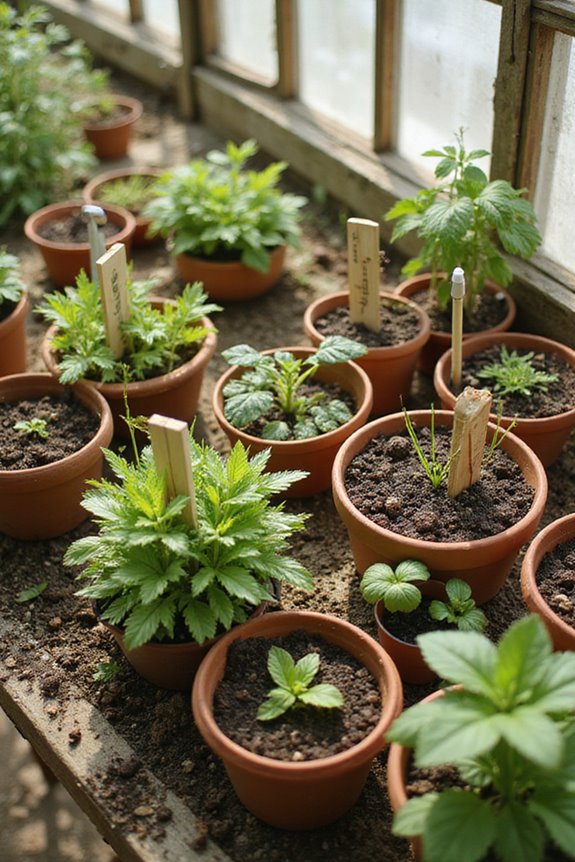
Setting up the hardware for our IoT garden is a fundamental step in guaranteeing its success. We’ll use microcontrollers like the Arduino Nano RP2040 Connect or ESP32 for processing sensor data. It’s essential to organize our wiring neatly to avoid tangles and secure reliable connections. Accurate sensor placement, such as inserting soil moisture sensors near plant roots, enhances sensor accuracy.
For calibration, we should test sensors in known conditions, mapping their output to real-world parameters like moisture percentage. Regular re-calibration is important to maintain accuracy, especially as environmental factors change. Incorporating protective components and stable connectors will help us avoid hardware damage. By following these guidelines, we can create a well-functioning IoT garden that thrives.
Software and Firmware Troubleshooting
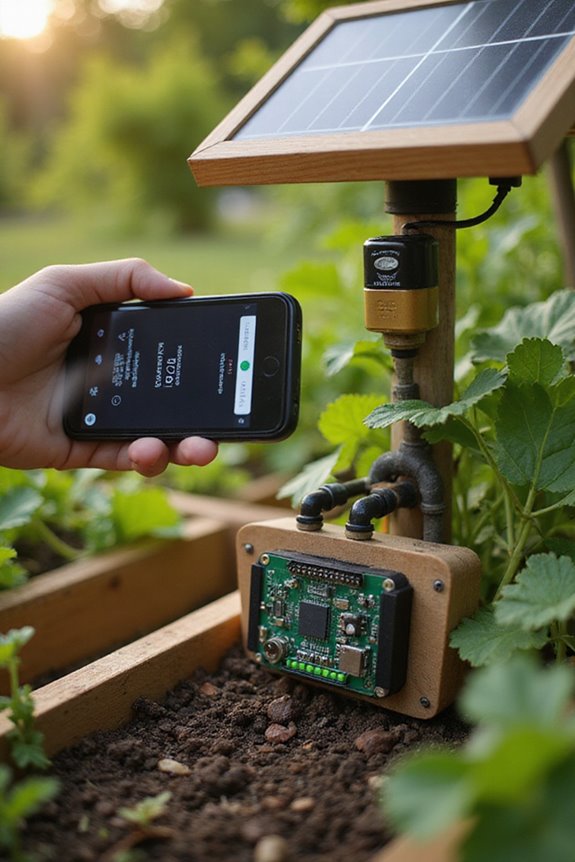
Software and firmware troubleshooting is essential for keeping our IoT garden running smoothly. To start, we should collect error logs from our devices. This helps us understand the context of any issues. Next, let’s check for any firmware updates; outdated versions can often lead to problems.
- Isolate the affected device from the network to prevent further issues.
- Review the error logs for warnings and anomalies.
- Use network diagnostic tools to capture traffic and identify communication faults.
Watering System and Actuator Problems
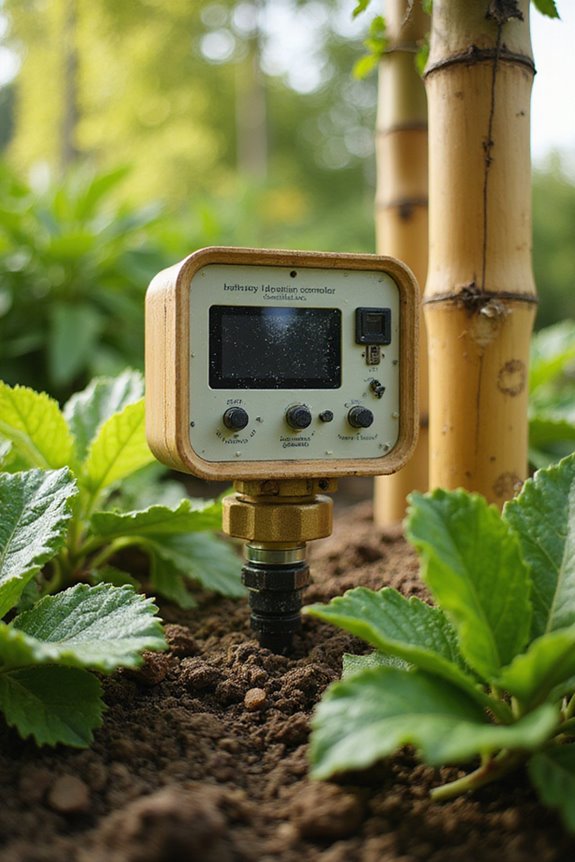
Watering systems and actuators are essential components of our IoT garden, ensuring plants receive the right amount of water. If we’re facing issues, we should start by checking the moisture sensor readings. They need to indicate ideal levels, typically around 400-450. If we notice a pump malfunction, it may stem from electrical faults or blockages.
Here are some troubleshooting steps:
- Verify sensor accuracy before activating the pump.
- Check actuator control signals and physical pump operation during watering.
- Inspect for clogs or leaks in the water delivery path.
- Implement delays between actuator cycles to prevent overwatering.
Environmental and External Factors
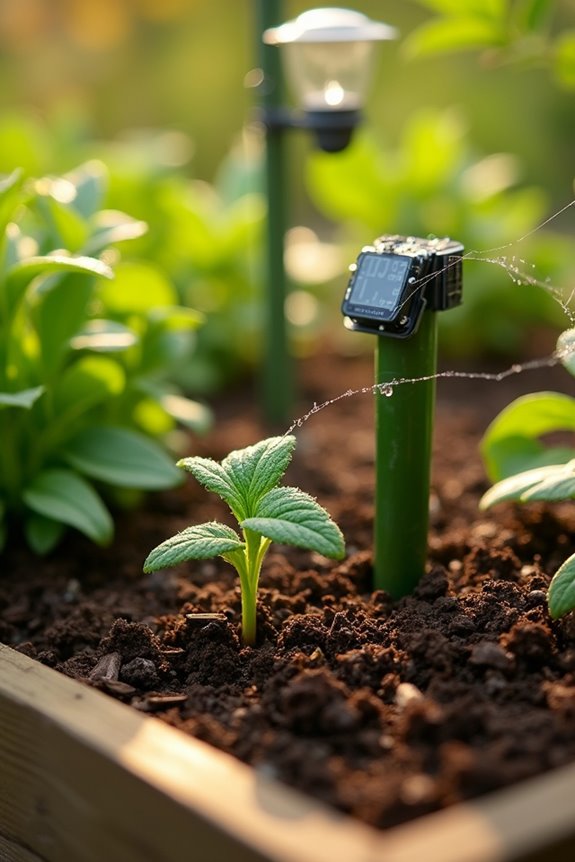
Environmental factors play a significant role in how well our IoT garden operates. We need to monitor temperature fluctuations, as extreme changes can cause sensor malfunctions. High humidity levels may lead to corrosion, while dry conditions can gather dust on sensors, affecting accuracy.
Light exposure is vital, too. Overexposure to sunlight can degrade sensors, while artificial lights require calibration to match plant needs.
Finally, air quality impacts growth dynamics. Pollutants like CO2 can change plant health, and we should regularly clean air quality sensors to guarantee effectiveness.
Frequently Asked Questions
How Can I Reset My Iot Garden System?
When we’re resetting our IoT garden system, we can restore factory settings through software commands or configuration interfaces. It’s a great way to refresh everything and guarantee our devices run smoothly together.
What Are Common Signs of Sensor Malfunction?
We’ve all felt the frustration of data inconsistency while relying on our garden sensors. When we notice sensor accuracy faltering—like erratic readings or sudden shifts—it’s essential to recognize these signs of potential malfunction together.
How Do I Improve Wi-Fi Signal Strength in My Garden?
To improve Wi-Fi signal strength in our garden, let’s consider using Wi-Fi extenders, outdoor routers, or signal boosters. Mesh networks can also provide seamless coverage, ensuring we all stay connected while enjoying our outdoor spaces.
Can I Integrate My Garden System With Other Smart Home Devices?
Absolutely, we can integrate our garden systems with other smart devices! By ensuring smart device compatibility, we’ll enjoy the benefits of garden automation, making our gardening experience more efficient and connected with our smart home.
What Should I Do if My App Crashes During Use?
When our app crashes, we should first check app compatibility and review error logs. Restarting the device often clears glitches, and updating the app can make a world of difference for smoother performance together.


